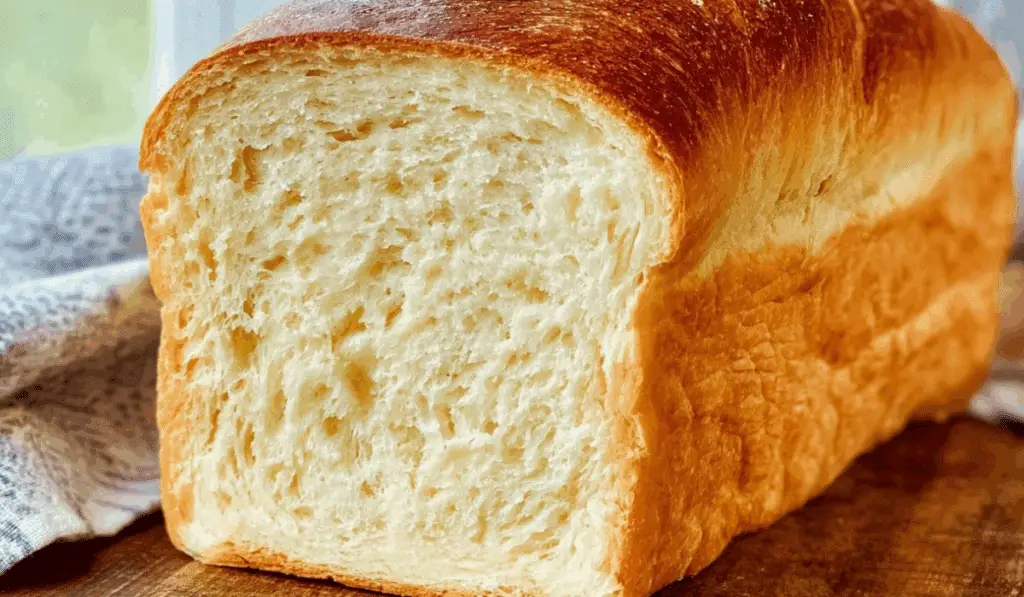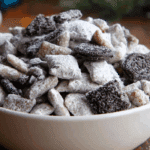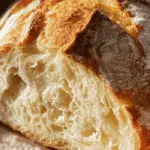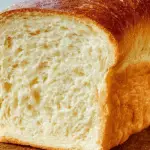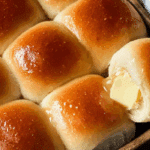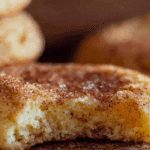There’s just something magical about the aroma of fresh bread wafting through the kitchen. For me, it all began one snowy afternoon in my grandmother’s farmhouse kitchen. She handed me a warm slice of Soft Amish White Bread, slathered with butter and a drizzle of honey, and from that moment, I was hooked. This bread wasn’t just food; it was home. Over the years, I’ve tried countless recipes, but nothing compares to the fluffy, slightly sweet, and irresistibly soft Amish version.
In this article, we’re diving into the story, the method, and the secrets behind this timeless loaf. Whether you’re a first-time baker or a seasoned bread lover, this guide will help you master the art of baking Soft Amish White Bread from scratch.
You’ll learn how to prepare the dough, what makes it uniquely soft, how to store it perfectly, and how to pair it for any occasion. Ready to bring this nostalgic warmth into your own kitchen?
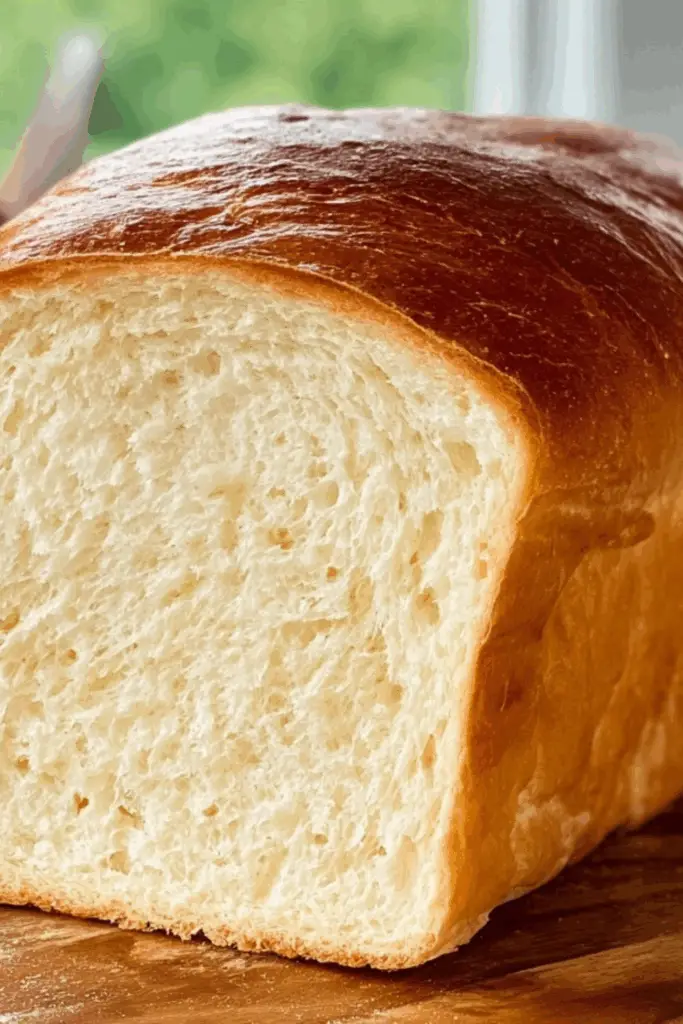
The Heartwarming Story Behind Soft Amish White Bread
Humble Beginnings in Amish Kitchens
The origin of Soft Amish White Bread is as rich as its flavor. In the Amish community, where time slows down and meals are made with care, bread plays a central role. This particular recipe stood out because of its pillowy softness and sweet undertones. Amish cooks used simple, pantry-friendly ingredients—flour, milk, sugar, yeast, butter—to craft a loaf that felt like love in every bite. Unlike rustic sourdoughs or crusty baguettes, this bread was made to be enjoyed fresh, warm, and shared at the family table.
During my visit to Pennsylvania Dutch Country, I noticed that every local bakery had its own variation. Still, the essentials never changed: warmth, sweetness, and softness. This wasn’t just a side dish—it was the centerpiece, often served with butter or turned into thick-sliced French toast.
While baking with one Amish family, they shared a trick I still use today: after kneading the dough, let it rise in a buttered bowl covered in a flour-dusted kitchen towel. That step alone made my homemade loaves resemble the ones I grew up loving.
Print
Soft Amish White Bread: The Ultimate Comfort in Every Slice
Soft Amish White Bread is fluffy, slightly sweet, and made with simple ingredients. Perfect for breakfast, sandwiches, or toast.
- Total Time: 2 hours
- Yield: 2 loaves 1x
Ingredients
- 6 cups all-purpose or bread flour
- 2 cups warm whole milk (110°F)
- 2/3 cup white sugar
- 1/4 cup unsalted butter (softened)
- 1.5 tbsp active dry yeast
- 1.5 tsp salt
Instructions
- In a large bowl, dissolve sugar in warm milk and sprinkle yeast over top. Let proof for 10 minutes.
- Add softened butter and salt. Mix in 3 cups of flour, stirring until combined.
- Gradually add remaining flour and knead until smooth and elastic (8–10 minutes).
- Place dough in a greased bowl, cover, and let rise in warm area for 1 to 1.5 hours.
- Punch down, divide dough, shape into loaves, and place in greased 9×5 pans.
- Let rise 30–45 minutes, until dough reaches top of pans.
- Bake at 350°F for 25–30 minutes or until golden and sounds hollow when tapped.
- Remove from pans, cool on wire racks, and brush tops with butter if desired.
Notes
- Brush tops with melted butter for a softer crust.
- Store wrapped at room temp up to 3 days or freeze slices with parchment between.
- Use leftovers for French toast, sandwiches, or croutons.
- Prep Time: 15 minutes
- Cook Time: 30 minutes
- Category: Breads
- Method: Baking
- Cuisine: Amish
- Diet: Vegetarian
Nutrition
- Serving Size: 1 slice
- Calories: 160
- Sugar: 4g
- Sodium: 150mg
- Fat: 3.5g
- Saturated Fat: 2g
- Unsaturated Fat: 1g
- Trans Fat: 0g
- Carbohydrates: 28g
- Fiber: 1g
- Protein: 4g
- Cholesterol: 10mg
Why This Bread Stands Out
So what makes Soft Amish White Bread so unique? First, it’s the texture—it’s incredibly tender, thanks to a higher ratio of milk and sugar. That richness gives the crumb its trademark softness. Next, it has a hint of sweetness that makes it perfect for both savory and sweet toppings.
Unlike many store-bought loaves, there are no preservatives or artificial stabilizers in this bread. It’s naturally soft and fluffy, which is why it’s often compared to Japanese milk bread—but without the tangzhong method. It’s straightforward, honest baking.
In fact, it’s so versatile you could pair it with hearty stews or use it as a base for sandwiches. For those who love soft baked goods, you’ll also appreciate these soft snickerdoodle cookie tips or even the delightfully rich cheesy breadsticks that follow a similarly cozy vibe.
Now that we’ve explored the emotional and cultural roots of Soft Amish White Bread, let’s get our hands in the dough and move into making your own.
Ingredients and Dough Preparation for Soft Amish White Bread
The Pantry Staples That Make the Magic
Making Soft Amish White Bread doesn’t require a fancy list. What it needs is quality and balance. You’ll want:
- All-purpose flour or bread flour for stronger structure
- Whole milk or 2% milk for softness
- White sugar for a hint of sweetness
- Active dry yeast to help it rise
- Salt for flavor
- Butter for richness (unsalted is best)
These ingredients aren’t exotic, but how you combine them matters. I always recommend warming your milk to about 110°F—just warm enough to activate the yeast without killing it. And don’t skip proofing your yeast. Let it bubble and bloom for 5–10 minutes before mixing into your dough.
One simple secret? Add the butter after your dough has started forming. This technique, known as “enriched dough layering,” helps make your loaf softer and silkier. Mix until the dough is smooth, about 8–10 minutes using a stand mixer or a bit longer by hand.
Kneading, Resting, and First Rise
Kneading is where the magic starts. When done properly, the dough should become elastic and slightly tacky, not sticky. This elasticity is what gives the bread its signature bounce. Once kneaded, place it into a greased bowl, cover with a towel, and let it rise in a warm, draft-free place.
Rising time varies depending on the room temperature, but typically you’re looking at 1 to 1.5 hours. The dough should double in size. During colder months, I let it rise near the oven while it preheats.
For a variation that’s just as rich and tender, consider making olive garden-style breadsticks or even these soft Danish butter cookies that also thrive on a perfectly rested dough.
Let’s now shape and bake the perfect loaf in Part 3.
Shaping, Proofing, and Baking the Loaves
From Dough to Loaf – Shaping It Right
Once your dough has doubled, gently punch it down and divide it if making two loaves. Shaping matters. Roll the dough out slightly and fold it in like a letter, pressing gently to seal seams, then tuck the sides under to create tension.
Place the shaped loaves into greased bread pans. This size fits perfectly into a standard 9×5 loaf pan. Be sure to place the seam side down to prevent cracking on top during baking. Cover with a towel and let rise again—about 30–45 minutes—until the dough crests just above the pan edge.
If you prefer rolls instead, divide into smaller dough balls and bake in muffin tins or sheet trays. You’ll still get that classic softness, especially when brushed with melted butter after baking.
Baking Tips for a Fluffy Finish
Preheat your oven to 350°F. Bake your loaves for 25–30 minutes or until golden brown on top and hollow-sounding when tapped. If the top browns too quickly, tent it with foil during the last 10 minutes.
When done, remove from pans immediately and place on a wire rack to cool. This prevents sogginess and ensures your bread finishes steaming naturally. You can also brush with butter right out of the oven for a shinier, softer crust.
If you’re in the mood to experiment, try shaping into dinner rolls like the garlic butter bread rolls, or even swirl it like these banana bread cinnamon rolls for a sweet twist using the same dough foundation.
Now that your bread is out of the oven, let’s talk storage, serving, and long-term enjoyment.
Storing, Serving, and Using Soft Amish White Bread
Keeping It Fresh and Freezer-Friendly
Fresh Soft Amish White Bread is heavenly, but it’s important to store it right. Once fully cooled, wrap it tightly in plastic wrap or place it in a bread bag. Store at room temperature up to 3 days.
For longer storage, freeze loaves or slices in a zip-top bag. When freezing, place parchment paper between slices so you can grab one at a time. Reheat frozen slices in the toaster or microwave for just-baked warmth.
Avoid the fridge—cold temps dry out homemade bread. If you bake often, consider freezing half right away and enjoying the rest fresh.
For another fluffy, freezer-friendly option, check out fluffy cottage cheese cloud bread or this tangy-sweet lemon zucchini bread that stays moist for days.
Creative Serving Ideas
Soft Amish White Bread pairs with just about everything. Serve warm with butter and jam for breakfast, or as a base for the ultimate grilled cheese. It’s also perfect for French toast—thick slices soak up custard beautifully.
Make garlic bread by broiling with butter, garlic, and herbs. Or use it as a sandwich base for pulled pork, egg salad, or tuna melts.
Feeling fancy? Top a toasted slice with avocado and poached eggs. Or make croutons for soups and salads by cubing and roasting leftover bread with olive oil.
Speaking of comfort and indulgence, these shortbread cookies and garlic swirl rolls also hit that homemade sweet spot—no pun intended.
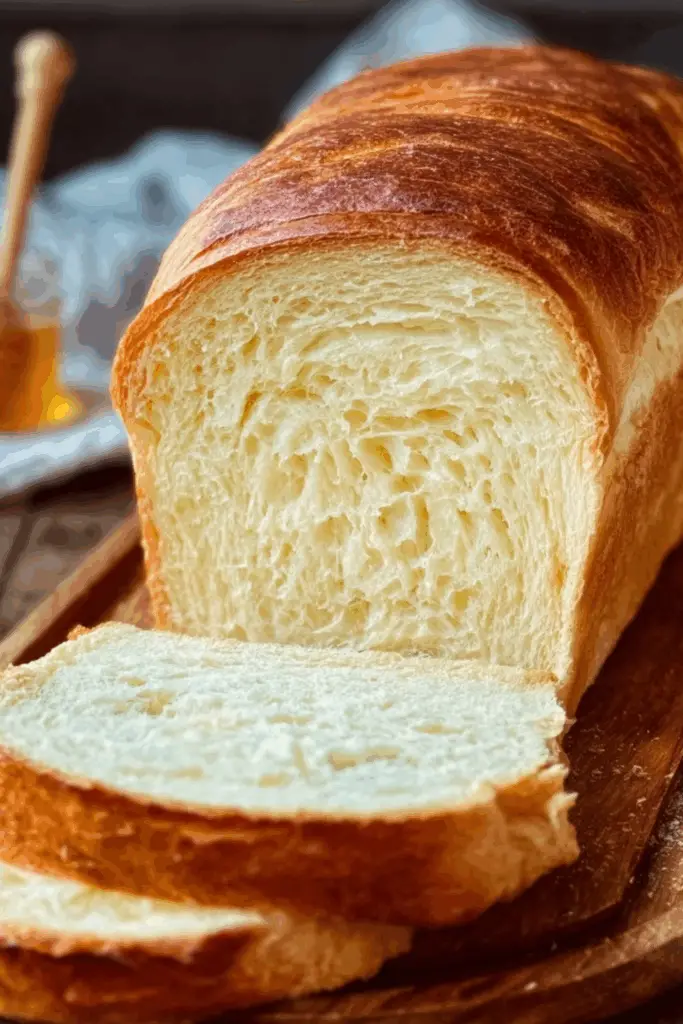
Serving Up the Final Words for Soft Amish White Bread
Soft Amish White Bread isn’t just a recipe—it’s a tradition, a comfort, and a slice of memory you can hold in your hands. From its rich Amish heritage to the soft texture that melts in your mouth, this bread continues to bring warmth to kitchens across generations. It’s made from simple ingredients, yet it delivers an incredibly satisfying experience whether served fresh out of the oven or toasted with your favorite toppings.
Whether you’re baking it for the first time or making your tenth loaf, the joy of pulling that golden crust from the oven never gets old. Don’t forget to share it—because bread like this deserves to be passed around the table, just like those family stories and second helpings.
And if you’re still craving homemade goodness, explore more comforting bakes like coffee cake or buttery raspberry linzer cookies. They’re perfect companions to your baking journey.
Now, let’s address some of the most common questions about Soft Amish White Bread.
FAQ
How do I make Soft Amish White Bread even fluffier?
For extra fluffiness, use bread flour instead of all-purpose and ensure your dough is properly kneaded until smooth and elastic. Don’t skip the second rise—it helps the structure develop fully.
Can I use whole wheat flour in this recipe?
Yes, you can substitute up to 50% of the flour with whole wheat. Just note the loaf will be slightly denser. You may need to add a bit more liquid since whole wheat absorbs more moisture.
How do I know if my yeast is still active?
Proof it first! Add the yeast to warm water with a teaspoon of sugar. If it bubbles and foams within 5–10 minutes, it’s active and ready to use.
What can I use leftover bread for?
Leftover Soft Amish White Bread is perfect for French toast, grilled cheese, bread pudding, or even homemade breadcrumbs. You can also enjoy it with spreads, soups, or toasted with butter.

